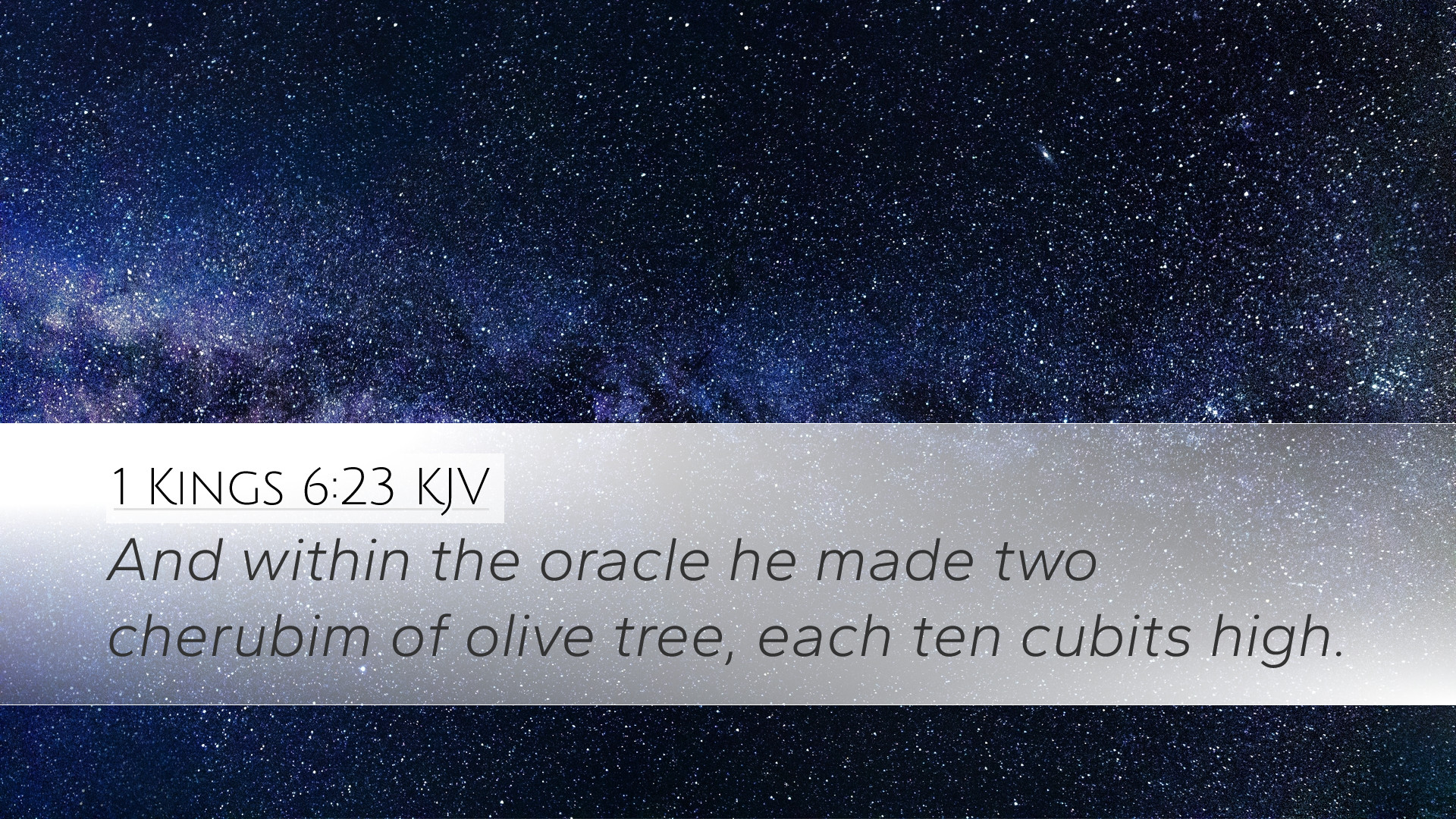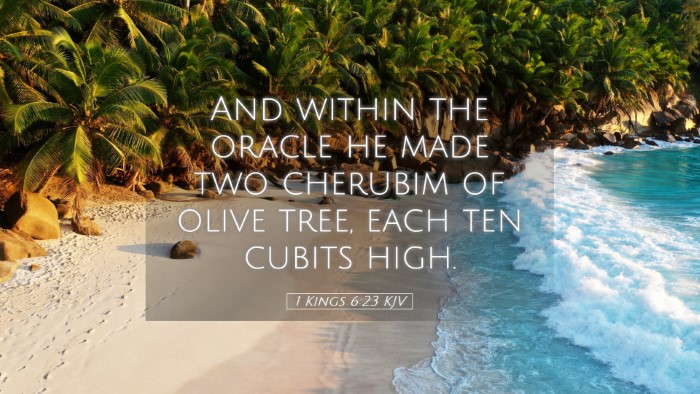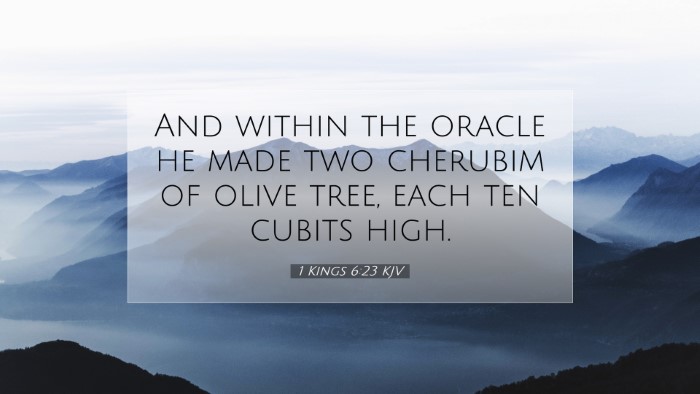Commentary on 1 Kings 6:23
Verse Text: "And within the oracle he made two cherubims of olive tree, ten cubits high." (1 Kings 6:23, KJV)
Overview
This verse is nestled within the larger context of Solomon's temple construction, a monumental achievement that symbolizes God's presence among His people. The addition of the two cherubim within the oracle signifies the holiness and majesty of God, as the temple serves as a meeting place where heaven intersects with earth.
Commentary Insights
1. The Significance of the Cherubim
Matthew Henry explains that cherubim are heavenly beings which represent the guardianship of God's holiness. Made of olive wood, the choice of material suggests both durability and value, mirroring the sacred nature of their role in the temple's service. Henry notes that their inclusion illustrates the importance of divine protection over the sanctum.
2. Dimensions and Construction
Albert Barnes provides insights into the dimensions of the cherubim, which were ten cubits high, or approximately 15 feet. This immense size denotes their grandeur and the awe-inspiring nature of God. Barnes emphasizes that their scale reflects not only their significance in worship but also serves to display the majesty of God as they overshadow the ark of the covenant, symbolizing His covenant with Israel.
3. Symbolism of the Olive Tree
Adam Clarke remarks on the choice of olive wood, suggesting that it symbolizes peace and prosperity. In the Biblical tradition, olive oil is often linked with the anointing of kings and priests, thus the use of olive wood can be seen as an indication of the temple’s purpose as a place of blessings and divine favor. This material connects the spiritual with the earthly, aligning with the overarching theme found throughout scripture of God’s desire to dwell among His people.
Theological Implications
1. God’s Presence
The placement of the cherubim in the oracle of the temple highlights the deep spiritual truth regarding God's presence. Where the cherubim are, God is present, affirming the promise that He will dwell among His people. This resonant theme throughout scripture invites believers today to recognize that God longs for intimacy with His creation.
2. Divine Protection
The cherubim's role as guardians over the ark embodies God’s protective nature. Their positioning in the holy of holies emphasizes the significance of approaching God with reverence and awe, as the dwelling place of the Almighty is not to be taken lightly. It encourages a spirit of humility and respect when one enters into a time of worship, reflecting on the seriousness of divine encounters.
3. Worship and Holiness
The command to construct these cherubim speaks to the heart of worship. In God's house, the atmosphere is infused with holiness. Thus, for contemporary worship leaders and congregants, this verse serves as a call to create spaces of worship that reflect the sanctity of encountering God, reminding them that worship is not merely a routine but an act of reverence and connection with the divine.
Practical Applications
- Reflecting on Sacred Spaces: Consider the spaces in which you worship. Are they designed to facilitate a genuine encounter with God’s presence? How can these environments be enhanced to make them more reflective of divine holiness?
- Guardianship of God’s Glory: Just as the cherubim protect the sanctum of the temple, are there ways in which you can guard the glory of God in your personal life and community?
- Promoting Divine Connection: Engage in practices that foster a connection with God, anticipating His presence in worship services, personal devotions, and communal gatherings.
Conclusion
The dimensions and construction of the cherubim in 1 Kings 6:23 extend beyond artistic achievement; they encapsulate profound elements of theology, worship, and daily living. Through understanding this passage, believers can gain deeper insights into God’s holiness, His desire for relationship, and the reverence necessary in approaching the Almighty.


